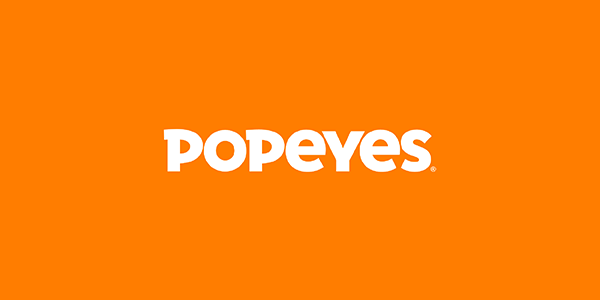Connected TV Statistics Every Advertiser Should Know

Connected TV (CTV) advertising can no longer be ignored.
Once viewed as an alternative to linear TV, CTV has become the dominant method for watching TV shows, movies, and events.
Roughly 88% of US households own at least one internet-connected TV device. CTV accounts for over one-third of total TV usage and is projected to reach 238 million US viewers in 2025.
As a result, CTV has become the fastest-growing ad channel in the US, with CTV accounting for 1 in 10 US dollars spent on digital advertising (90% of which is transacted programmatically).
Whether you’re new to CTV advertising or looking for some CTV stats to beef up your next slide deck, look below to learn more about CTV’s remarkable growth and why marketers are flocking to it.
What is CTV?
CTV allows viewers to stream content live or on-demand through their television. Examples include smart TVs like Amazon Fire TV and external devices/gaming consoles, such as Apple TV, Roku, Chromecast, Xbox, and PlayStation.
Unlike traditional TV, CTV provides access to a broad range of digital video content through subscription and ad-supported streaming services like Disney+, Max, Paramount+, Peacock, Discovery+, and Pluto TV.
Stats on Connected TV Growth and Trends
It would be an understatement to say that the COVID-19 pandemic accelerated CTV’s growth over the past five years: it sent it skyrocketing.
CTV Ad Spending and Usage Goes Up
According to Nielsen, during the week of March 30, 2020, shortly after quarantine measures began, total hours spent with CTV devices in the US shot up 81% year-over-year.
Although lockdowns are now a distant memory for many, people are watching more CTV than ever before. The average US adult watched 123.4 minutes of CTV per day in 2024.
As a result, CTV advertising spend has increased by nearly 400% since 2019, and it’s projected to see double-digit ad spend growth in the US through the end of 2027.
US Connected TV Ad Spending (2022–2028)
EMARKETER forecasts that CTV ad spend will experience double-digit growth until 2028.
Source: EMARKETER
US advertisers are expected to spend $28.75 billion on CTV this year, growing 18.8% year-over-year. By 2028, CTV ad spending is forecasted to surpass $42 billion.
Elsewhere, CTV ad spending continues to grow, with CTV surpassing traditional desktop/laptop display ad spending in the UK.
Linear TV Ad Spending and Usage Goes Down
Meanwhile, linear TV ad spending in the US continues to decline. The Interactive Advertising Bureau (IAB) reports that 4 in 10 US agency and marketing professionals have reallocated ad dollars from linear TV to spend on CTV, and EMARKETER predicts linear TV ad spending will drop from $61.74 billion USD in 2024 to $56.83 billion in 2027.
US Linear TV Ad Spending (2021–2027)
EMARKETER predicts that linear TV ad spend will drop $4.48 billion by 2027.
Source: EMARKETER
Although linear TV ad spending was projected to increase slightly by 0.7% in 2024 due to the Summer Olympics and US elections, any gains will be short-lived: EMARKETER reports that CTV’s political ad growth has outpaced all other formats they track, increasing 506.3% between 2020 and 2024, and could be even higher by next election cycle.
Aside from more people watching CTV for longer hours each day, CTV’s remarkable growth can also be attributed to another factor: more people are willing to watch ads.
Ad-Supported Streaming Sneaks In
According to the New York Times, there were 93 million ad-supported streaming subscriptions in the US by the end of 2023. In spring 2024, that number nearly doubled to 170 million, with 75% of US homes having at least one ad-supported streaming service.
In the first three months of 2024, 56% of new subscribers chose a lower-priced ad tier (up from 39 percent a year earlier).
Due to household financial constraints and increasing availability, ad-supported video on demand (AVOD) and free ad-supported television (FAST) are on the rise.
US Free Ad-Supported Streaming TV (FAST) Viewers (2022–2028)
The number of FAST viewers in the US is expected to grow 12.47% between 2024 and 2028.
Source: EMARKETER
Almost one-third of the US population (111.5 million people) were expected to use a FAST service at least once per month in 2024, and 60% of CTV viewers say they’ll watch ads if it means they don’t have to pay as much.
Meanwhile, in the Asia-Pacific region, the CTV market size for AVOD is expected to reach $106.1 billion USD by 2032, representing a compound annual growth rate (CAGR) of 17.41%.
With ad-supported streaming on the rise, advertisers have more opportunities than ever to reach the right audience on CTV.
Connected TV Viewership: Audience and Demographics
CTV usage amongst younger generations is constantly increasing. Statista forecasts that 62.6 million millennials and 56.1 million Gen Zers in the US will watch CTV in 2025.
US Connected TV Users by Generation in 2025
Statista forecasts that 62.6 million millennials will watch CTV by mid decade.
Source: Statista
According to Nielsen, US audiences 18 years and older increased their time watching content through their CTV devices by more than 20% in 2023. Among younger members of Gen Z, CTV viewership is even higher, with 80.2% of 13–18-year-olds streaming content through CTV.
Meanwhile, older generations watch less CTV and more linear TV on average. In 2024, only 32.4 million American Baby Boomers counted themselves as connected TV users—nearly half the amount of millennials. In 2025, the number of Gen X and Baby Boomers who watch CTV is expected to decrease by 0.3% and 0.8%, respectively.
CTV Advertising Benefits: Key Stats For Marketers
According to an April 2024 report from IAB, 69% of advertisers believe CTV is considered a “must-buy.”
Here are some key stats that explain why marketers are increasing their spend on CTV:
- 84% of advertisers believe CTV delivers better targeting capabilities than linear TV.
- Advertisers who leveraged both linear TV and CTV achieved a 32% increase in total reach compared to those who used linear TV alone.
- 65% of marketers say their company increased sales using CTV alongside other paid channels.
- One-third of US viewers have used their CTV devices to complete a purchase after viewing an ad.
- Connected TV ads stand out more among US viewers, with CTV ad attention increasing to 51.5% in Q1 2024.
The Future of Connected TV
Even though CTV offers advertisers a lot of potential, it’s important to know where it’s headed to make the most of your campaign strategy.
Here are some research-backed predictions on the future of CTV.
Smart TVs Leave Connected Devices in the Dust
Smart TVs are the most popular device for streaming CTV content thanks to their built-in capabilities.
US Connected TV Users by Device (2024)
Only smart TV usage is forecasted to grow by more than 5% in 2024.
Source: EMARKETER
The usage of smart TV devices is predicted to increase even more. EMARKETER reports that by 2027, over 75% of US CTV users will access their content via a smart TV. By 2028, smart TV users will outnumber Roku users by more than 53 million.
CTV Ad Growth Will Slow
CTV ad spend got a huge bump this year with the introduction of CTV ads into Amazon Prime Video. Despite double-digit growth, EMARKETER predicts that US CTV ad spend growth will slow from 18.8% in 2024 to 13.3% in 2025 and will continue to decline through the end of their forecast period in 2028.
CTV Ad Inventory Will Shrink
Despite an increase in premium inventory options for advertisers, Madison and Wall reports that combined ad inventory across CTV and linear TV will shrink by 6.6% annually between 2024 and 2027 due to a decrease in ad loads per commercial break.
According to EMARKETER: “CTV advertisers may find themselves paying more for fewer spots, but CTV’s shopability and targeting capabilities could make it worth the price.”
Ready to make the leap into CTV advertising with StackAdapt? Request a demo today.
More CTV Stats and FAQs
According to EMARKETER, the number of CTV viewers in the US reached 233.9 million in 2024, with roughly 115.1 million households watching CTV. In 2025, nearly 70% of the US population will watch CTV.
CTV is measured using advanced analytics that track viewer engagement through unique device IDs, viewership data, and real-time ad performance metrics. These insights help advertisers assess reach, frequency, and conversions across various CTV platforms.
CTV ads have high completion rates compared to other types of digital advertising. Statista says the average completion rate for a 15-second CTV ad is around 94.5%. This high rate is primarily due to the nature of CTV viewing, which provides a more passive, “lean-back” experience compared to mobile or desktop environments.






